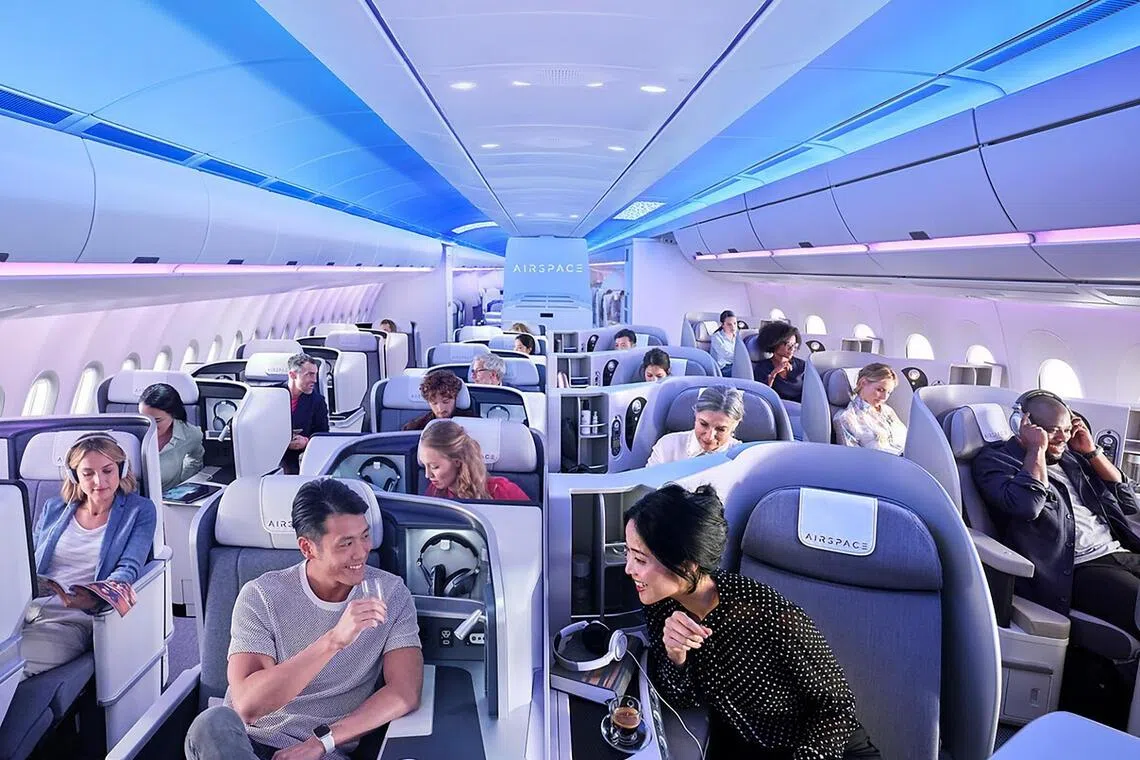For subscribers
Plane Truths: What makes a perfect aircraft cabin? Five overlooked features that improve your flight
Sign up now: Get ST's newsletters delivered to your inbox

The Airbus A350 aircraft features LED lighting with 16.3 million colours that can create a immense number of ambience scenarios.
PHOTO: AIRBUS
Follow topic:
- Cabin design involves extensive planning, testing and significant investments like Lufthansa's €2.5 billion project for upgrades, focusing on passenger experience.
- Weight reduction drives design using sustainable materials like bamboo to cut fuel consumption, but reduced comfort sparks passenger pushback and loyalty shifts.
- Many features enhance flights like fire-resistant seats, adaptable LED lighting reducing jet lag, cleaner air with Hepa filters and better cabin pressure through composites.
AI generated
SINGAPORE – To most travellers, a plane is simply the space where travel unfolds. But behind every seat, overhead compartment and window lies years of planning, testing and investment.
From conceptualisation to certification, the timeline can span several years, says Mr Ingo Wuggetzer, vice-president of cabin marketing at Airbus, Europe’s largest aerospace company. “Each component – a seat, a lighting system, even the sidewall lining – goes through rigorous testing.”


